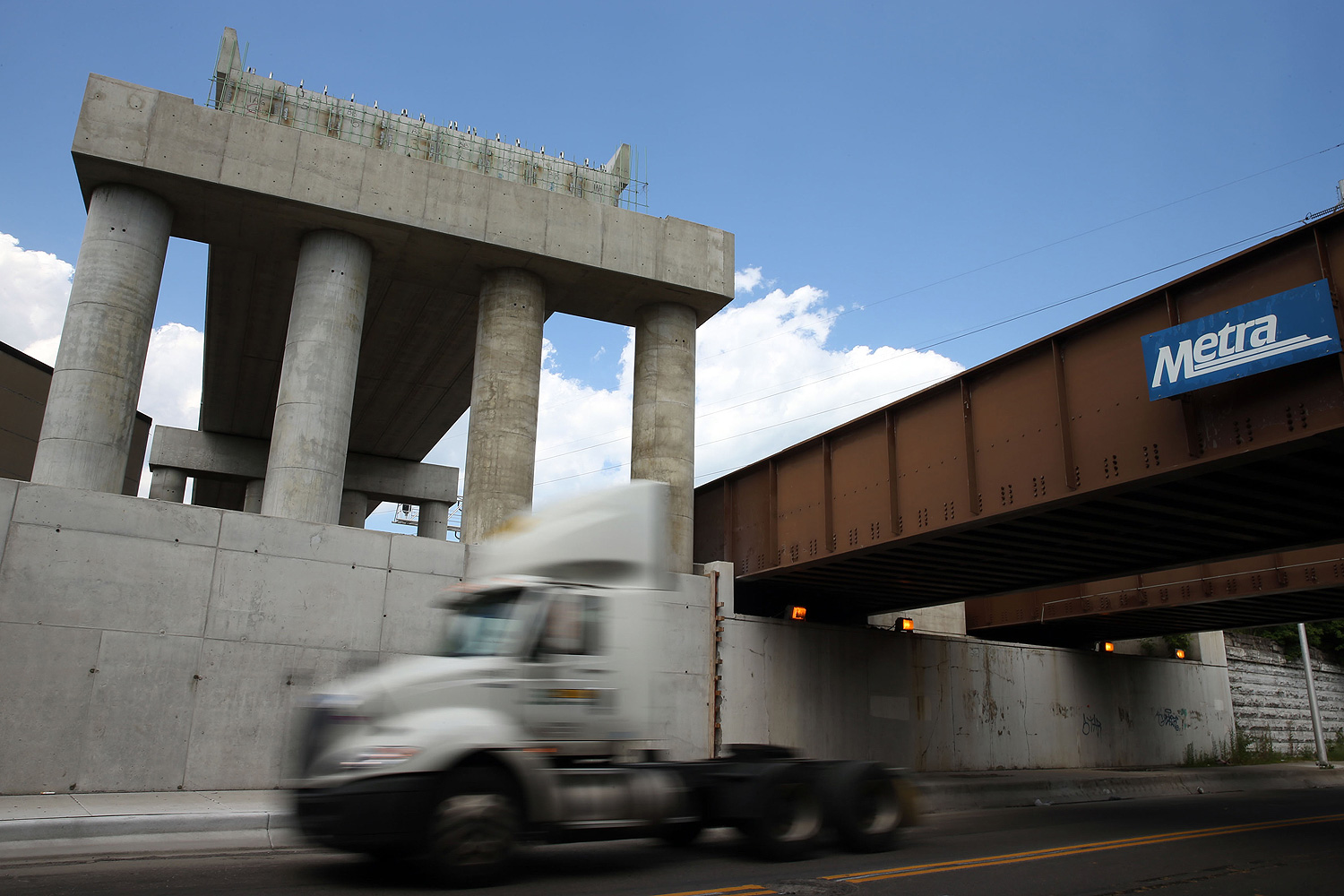If you follow infrastructure and transit news, you become so used to doomsday scenarios—literally the term of art that's generally employed—that something like modest progress is more than a modest surprise.
So it's notable that the American Society of Civil Engineers' new Illinois Infrastructure Report Card, a vast amount of technical and funding data sifted down to a few letter grades as a political conversation starter, not only got better (D+ to C-), no single category (aviation, bridges, dams, drinking water, navigable water, rail, roads, transit, and wastewater) received a lower grade than four years ago, despite the immense challenges of a fractious, austere federal government and a city and state desperate to cut budgets.
First, the good news: the rail category improved a full letter grade, from a D to a C, proof that things do get done if sufficient pressure is applied. Chicago's notorious rail bottleneck has long been an issue, and it's gotten a lot of attention for something that's mostly out of sight and out of mind for the general public (save for the Metra- and Amtrak-riding public). And from that attention, public policy has been made.
"The biggest surprise would be the improvement of the rail category," says Patrick Lach, president of the Illinois section of the ASCE. "One of the reasons why is that there's been a lot of additional investment into the rail program, including the Chicago Region Environmental and Efficiency Program—the CREATE program. That has helped, basically, unclogging some of the bottlenecks on the rail and roadway system throughout the region."
The example that comes to mind for me is the Englewood Flyover, which gives you a sense of the scale of just one sub-bottleneck of the greater bottleneck: "will eventually elevate the tracks for 78 weekday Metra Rock Island trains, so they don’t cross tracks for 60 daily freight and Amtrak trains at the same grade." That's about 1/60th of CREATE.
"In addition, not only that, there's also been a lot of private investment into rail," Lach says. "A lot of the rail companies have started doing their own investment to improve their own infrastructure." For example, the question we asked CenterPoint Properties' Michael Mullen in 2011:
As the largest industrial landlord in the Chicago area, CenterPoint invested $3 billion to turn thousands of acres at the old Joliet Arsenal into a vast intermodal rail facility, with millions of square feet of warehouse and manufacturing space. With 70 percent of U.S. rail freight passing through the Chicago area, you’re in the catbird seat. How did that happen?
Long story short: it was a Superfund site, but a Superfund site serviced by two Class I railroads and "at I-55 and I-80. That’s Main and Main for the trucking industry." With gas prices unlikely to come down and make trucking more affordable, bulk shipping by rail is expected to increase, which means it should increase in Chicago more than anywhere else, which means the infrastructure is at a premium.
Of course, there's more than one way to slowly and inexpensively ship stuff. Which brings us to the bad news, the only D- on the report card: navigable waterways, the most out of sight, out of mind category for the general public. Rail freight at least intersects everyday life at Metra and road crossings; save for the occasional recreational boater, the state's waterway system is the most easily ignored of the categories.
"It's something the public rarely interacts with, but it most likely touches everyone in Illinois in some way," Lach says. "We have a little over 1100 miles of inland waterways, and we ship about 116 million tons of commodities valued at more than $23 billion annually.
"The barges move up and down these miles of intercoastal waterways, and these systems are 50-plus years old through most parts, and we have currently all but one of the navigation locks along the waterways has exceeded their 50-year design life. We're basically at the end of the useful life for many of these facilities, and we have to put in a lot of maintenance and repair money when what really needs to happen is significant capital upgrades."
The thread running through these things is gas: it's expensive, and people are using less of it, voluntarily and not. People are driving less in cars with better MPG—and as gas prices go up, it becomes harder and harder to raise the taxes on that gas in a political climate unfriendly to both spending and taxes. And that, perhaps, is where the worst news lies:
"The highway trust fund, this year, if there's no remedy put in place, is going to go insolvent anywhere between now and August. What that ultimately means is that all the state DOTs that require matching federal funds to assist with construction projects, they are not going to be getting any money, because there is going to be no money going in," Lach says.
As much as of a mess as the state's finances are in, it's made some steps towards addressing its most pressing infrastructure problems. It's at the federal level, where austerity and enmity dominate, where the biggest problems begin.



